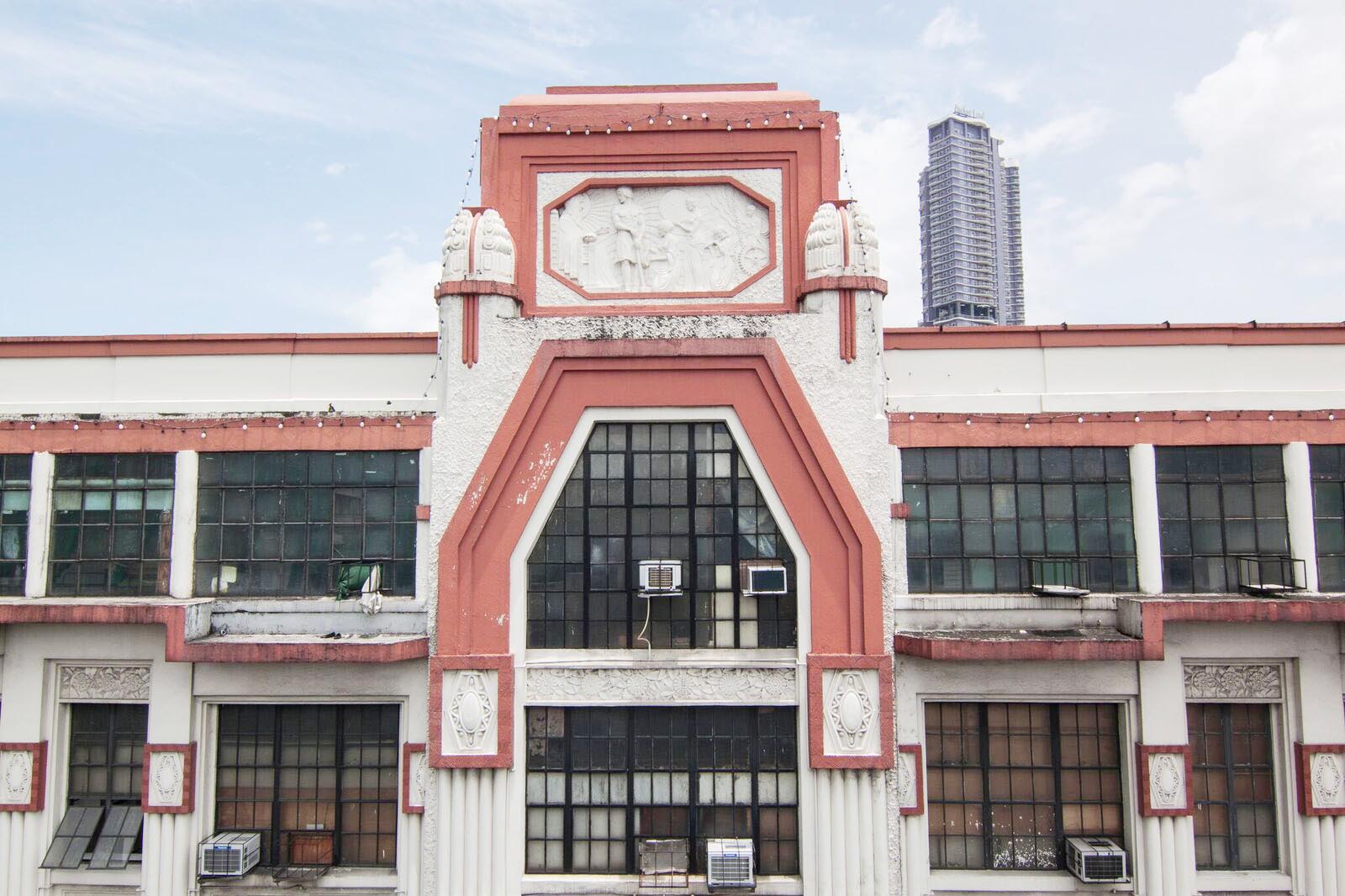In its heyday, Escolta was known as the “Queen of Manila’s Streets.” It was a fashionable place where new concepts were launched, such as the country’s first cinema, the Salon de Pertierra, in 1896. During the 1930s, businesses and organizations, such as the Manila Stock Exchange, competed to have their address here.
Today, it is evident that Escolta’s glory days are far behind. But one can still glimpse what Escolta was like before at the First United Building. Located at the mezzanine of the building is a small museum dedicated to the history of the building and of Escolta.
The exhibit consists of archival photos and artifacts recovered from within the building.
Among the things you will learn is that the elegant five-story structure first opened its doors in 1928. Back then, it was called the Edificio Luis Perez Samanillo, named after the rich Spanish businessman who commissioned the building.
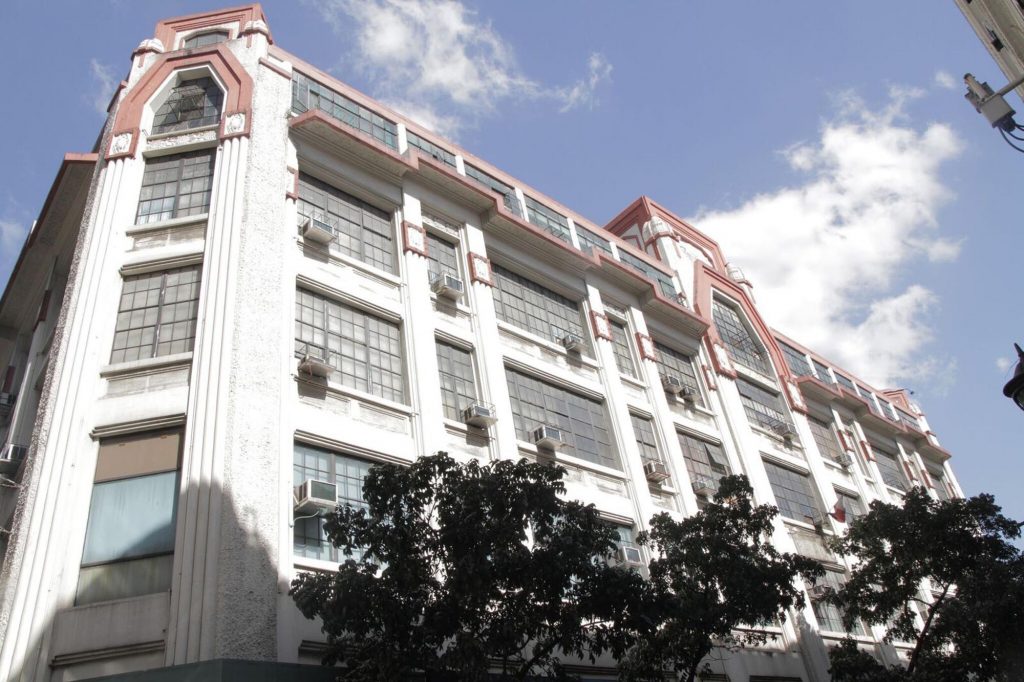
The wealthy Perez-Samanillo family had made its fortune from the development of the Paco district in the 19th century. They were also the owners of one of the most well-known Binondo landmarks at that time, the Hotel del Oriente.
For the design of his building, Don Luis hired the services of architect Andres Luna de San Pedro, son of famous painter Juan Luna.
He came up with a design that combined two of the most popular looks of that era, the Art Nouveau movement (emphasis on the curves of the staircase) and the Art Deco movement (emphasis on the straight line on the exterior).
Juan Nakpil de Jesus was the civil engineer, while Jose G. Cortes took care of the construction.
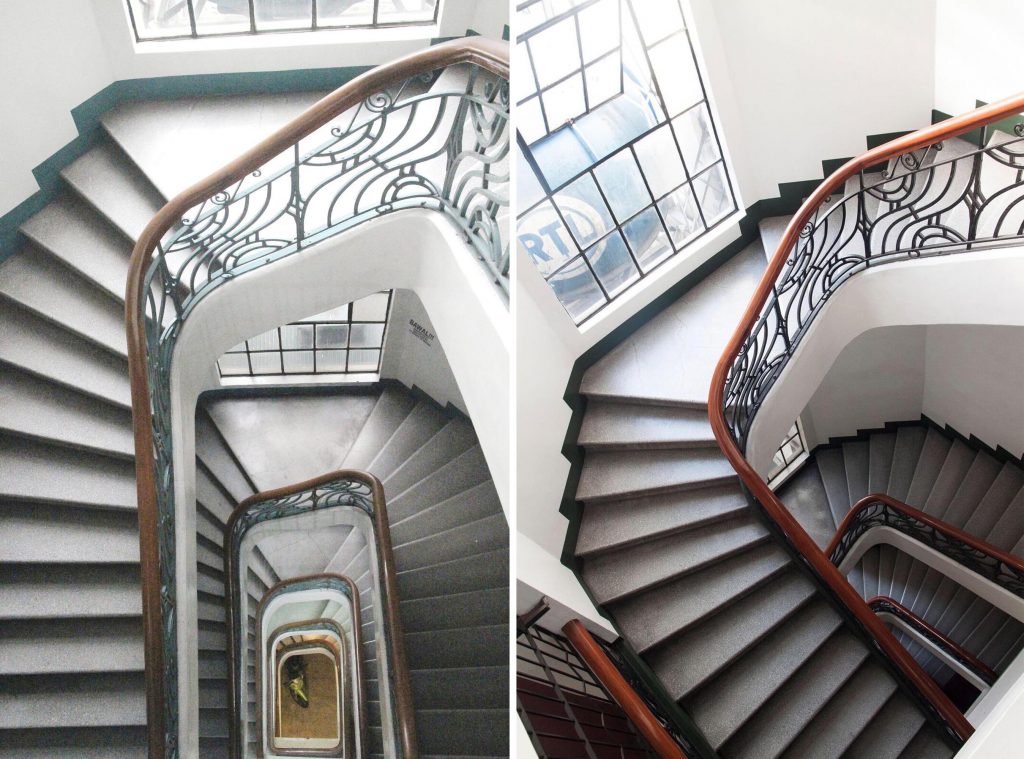
After the building opened, it attracted a number of prestigious tenants, among them the Spanish Consulate. But the public came to know the building through Berg Department Store, one of Manila’s most popular prewar department stores, owned by German businessman Ernest Berg. The store was known for its introduction of various retail innovations such as ready-to-wear clothes for women.
The building survived the Battle of Manila in 1945 and suffered only minor damage, reopening to the public after repairs were made.
In 1968, the building was bought by Jose Cojuangco, who then opened a branch of his First United Bank on the ground floor and renamed the building First United Building.
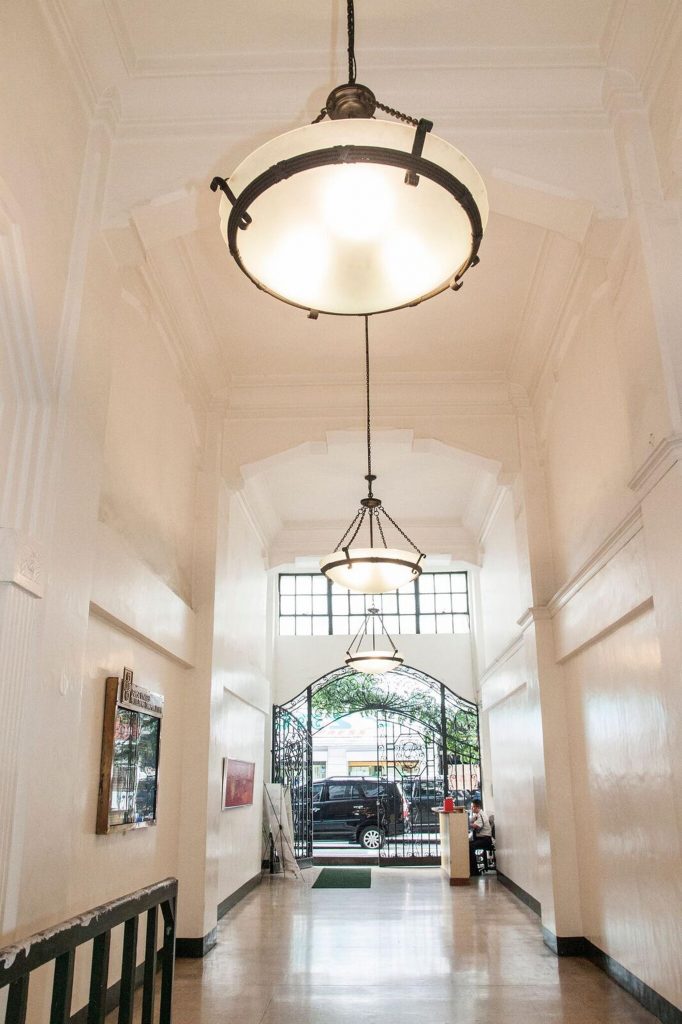
In 1975, the bank was renamed the United Coconut Planters Bank, but the building retained the name First United.
Prominently featured in the museum’s exhibit is businessman Sy Lian Teng. His story is tied with Escolta as he was the one who brought Berg Department Store in 1951 and the First United Building in 1979.
Berg closed in 1982 due to labor problems. Its space was taken over by another department store, and a few years later by a home furnishing store. But after Sy passed away in 2004, the home furnishing store closed as well.
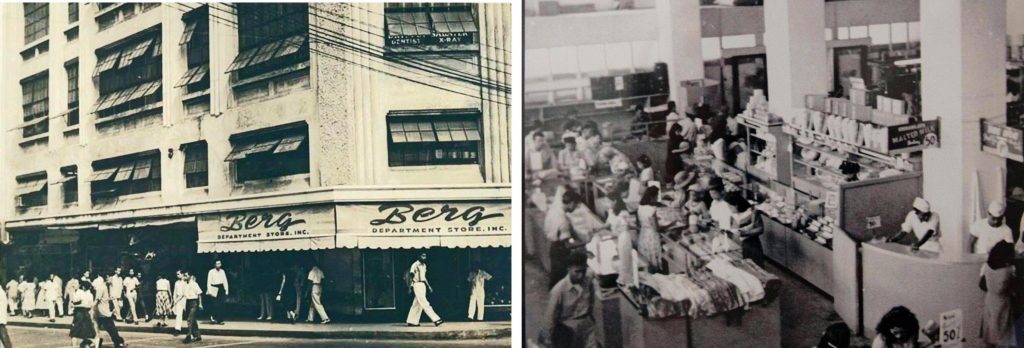
After his death, Sy’s son Roberto Sylianteng took over the stewardship of the building. It proved a challenge as Escolta was no longer a fashionable place. Despite big named movie stars such as Dolphy, Nora Aunor and Gabby Concepcion renting office space, few were interested in setting up shop in the building.
The temptation to sell was strong, but Roberto and wife Lorraine believed that Escolta still has a future.
In the late 1980s, Roberto and other Escolta building owners regularly met with then Manila Mayor Mel Lopez to find a solution to the community’s problems. The former mayor suggested that they form an association to better coordinate with one another.
In 1993, they filed their papers with the SEC and formed the Escolta Commercial Association Incorporated.
A fortuitous meeting with visual artist and curator Marika Constantino, who was then looking for a space in Manila, led to a project for an artists’ group she was a part of called 98B COLLABoratory.
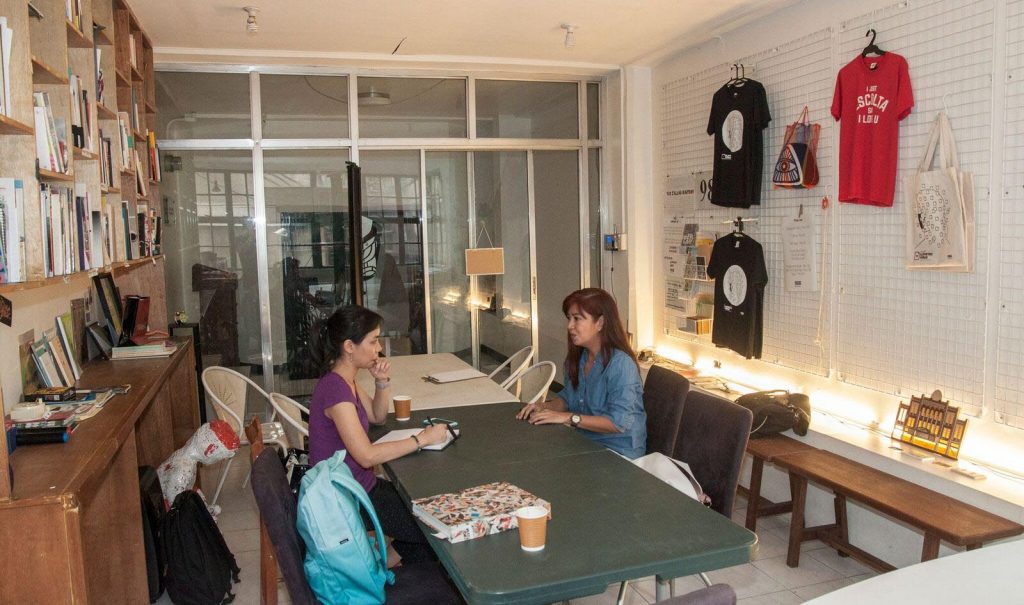
In the beginning, Constantino wasn’t sure if the timing for the project was right. But after three months of negotiating, she became friends with the Sylianteng couple, who offered Constantino a space at the mezzanine floor of the building for the group’s office where they could conduct their meetings and seminars, as well as serve as a gathering place for artists and other creative types.
When 98B first moved into FUB in July 2012, heritage conservation was not on top of their agenda. But they soon found themselves working with ECAI regularly and frequently.
Among the projects they worked on was a weekend bazaar, started in 2013, at the former Berg Department Store space, called Saturday X Future Market @ Escolta.
It became a monthly event that went on for three years. Not only did it help generate buzz for the building, it also revived a community spirit within Escolta, helping the different members of Escolta’s community, from building owners to street vendors, to connect.
In 2016, 98B and the FUB management decided to convert the bazaar space into a business incubator space called “Hub: Make Lab.” The space was divided into 22 stalls, each ranging in size from six to 12 square meters. The stalls were rented out to budding entrepreneurs for a three-month period at between P3,500 to P8,000 a month.
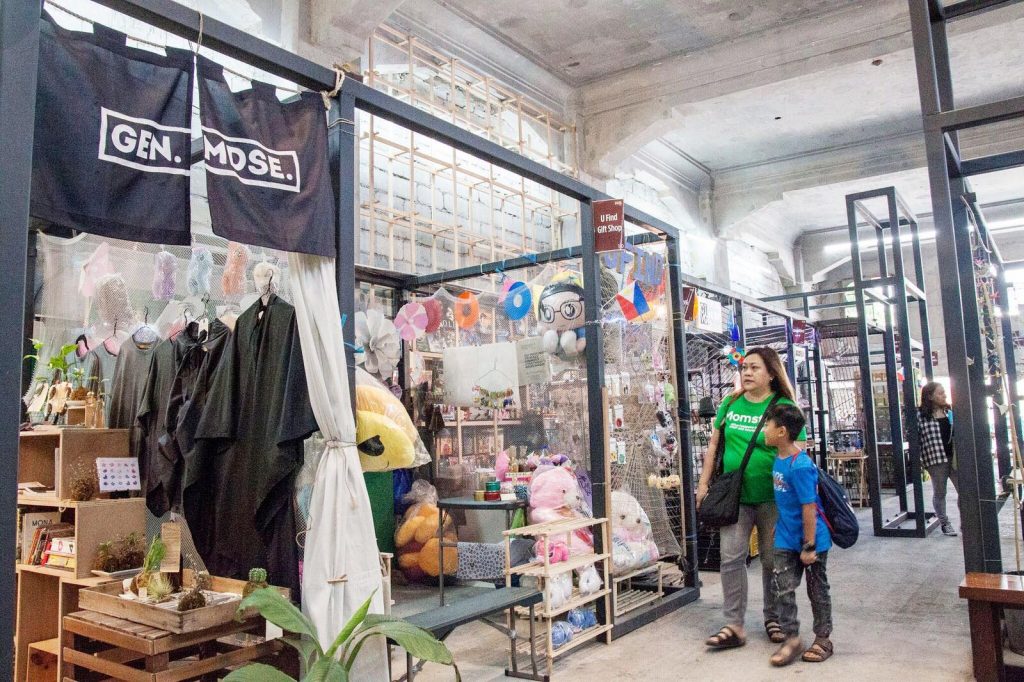
In an interview with CNN Philippines, Constantino said, “Creatives need opportunities. Just give it to them and they will be challenged by it and they will perform. Wala kasing binibigay na (They are not given any) opportunity. Parang kailangan lang (What is needed) is for people to believe in them.”
Among the first eager entrepreneurs to set up shop was Seb de Jesus of Kariton by 1372 design. He and his wife were a regular fixture at the Saturday market bazaar with their handmade notebooks.
Although they have an online website for their products, they considered their stall at the Hub as a promotional tool.
The Hub was launched to great expectation last June. After three months, De Jesus noticed that they tend to do better on the weekends than on weekdays. One reason for this was there was lighter traffic congestion on weekends. Another was events, such as the Linggo ng Musikang Filipino held last July 29, were scheduled at the Hub during weekends.
Aware of the need to drum up more business on weekdays, 98B and ECAI are considering holding more events. Constantino says some embassies have expressed interest in holding their events at the Hub.
As word spread, other creative types expressed interest as well. Among them were architect Jan Carlo San Luis and Angelo Ray Serrano.
Serrano first visited FUB in 2013, attracted by the buzz generated by the Saturday bazaar. While he was impressed, it wasn’t until he started his own architectural firm, 1/0 Design Collective, that he returned to FUB in 2015.
Through Constantino, he discovered that there were still vacant office spaces at FUB. While scouting around the building he chanced upon the corner office on the fifth floor, once used by Dolphy. He was so moved by the view of Escolta from that office space that he and San Luis returned the following week to negotiate to rent it.
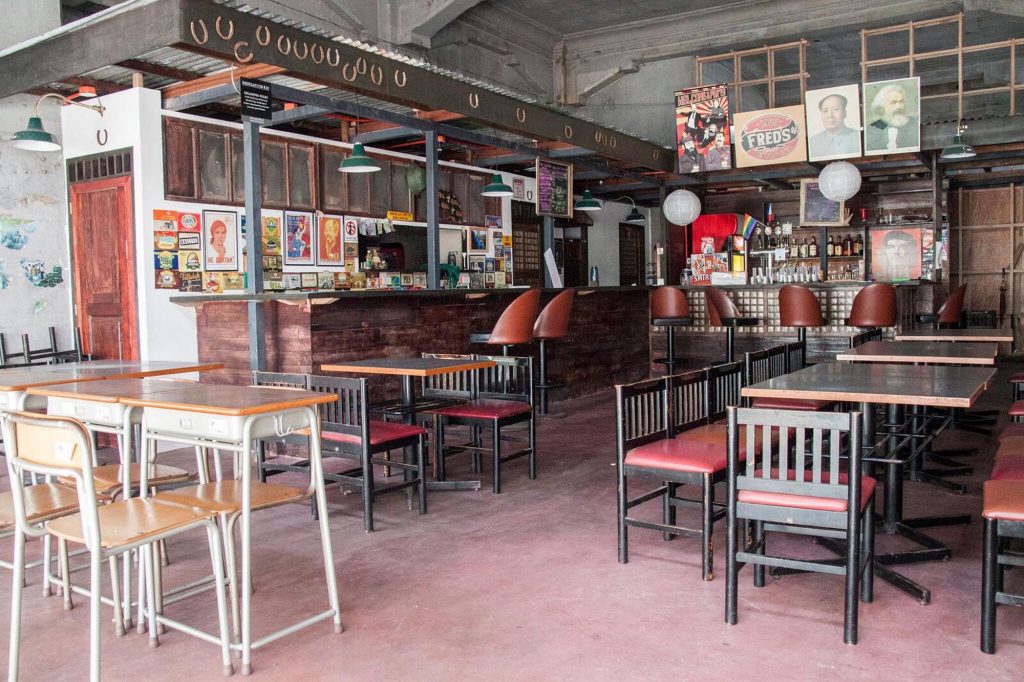
Serrano admits that clients often ask him why he chose to open his office in Escolta rather in a more fashionable part of town such as Bonifacio Global City or Eastwood. His usual answer: the architecture. He wants to be surrounded by examples of timeless architecture, which is an element that he feels is missing in many building designs today.
For Serrano, preserving a landmark building is more than just applying cosmetic changes or making it look brand new.
“What we are tackling here with 98B is the soul. We are not repainting everything just to make everything look brand new, but what is happening inside (the building) is more important. Maintaining the use (of a building) so that people will feel attached to it and in the end become part of the community that (will) take care of it.”
Since 1/0 Design Collective moved in, two graphic design firms have moved in to FUB as well. Serrano himself has opened another venture at FUB by collaborating with Gabriel Villegas of 98B, a former magazine art director who used to work as a barista.
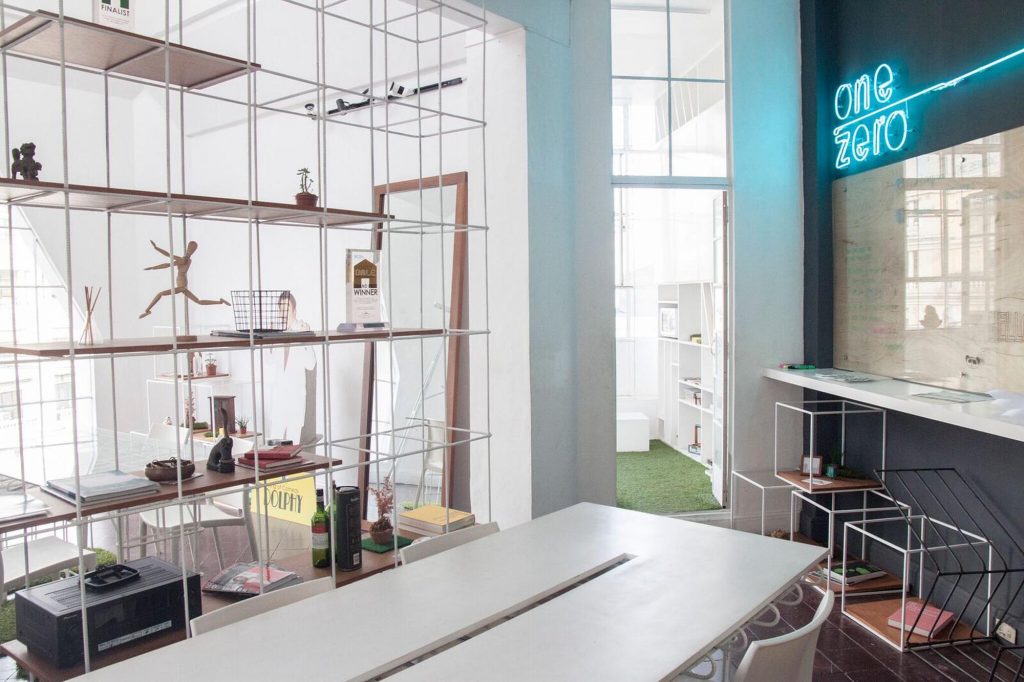
It has always been Villegas’ dream to open his own coffee shop but he could not find the right business partner.
Together with Serrano, they opened their coffee shop at the back of the Hub called The Den. They are so passionate about this venture, they are now juggling their time between their office jobs and working as baristas. Eventually, they do plan to hire staff to help manage the café.
Just as passionate about FUB is former photojournalist Jose Enrique “Derek” Soriano. He runs a bar in Cubao, Fred’s Revolucion, which he named in honor of his grandfather.
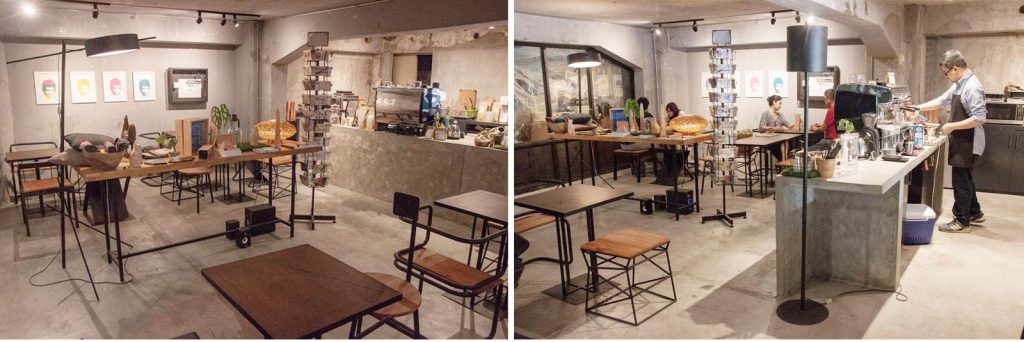
Since his grandfather used to live in Quiapo, he wanted to open another branch of the bar nearby. He thought that the location of FUB was perfect, even though it was a very risky venture, considering that there are no other similar establishments along Escolta.
But ever since he opened the bar in July, he has been able to attract all kinds of people from all over the metropolis.
Admittedly, it is still too early to say if what is happening in FUB will succeed in reviving Escolta. There is a still a lot of challenges that need to be solved, such as street lighting and police visibility.
But judging from how things are now, it seems that Escolta is on its way to taking on a much more creative and visionary role than it did in the past.
First United Building is located at 413 Escolta St. Binondo, Manila. First United Building Community Museum is open daily, from 9 a.m. to 5 p.m. with P50 entrance fee.HUB: Make Lab is open Tuesdays to Sundays, from 11 a.m. to 8 p.m. The Den is open Tuesdays to Sundays, from 11 a.m. to 9 p.m. Fred’s Revolucion is open Tuesdays to Sundays, from 6 p.m. to midnight. — First published in Tulay Fortnightly, Chinese-Filipino Digest 29, no. 7 (September 6-19, 2016): 14-16
